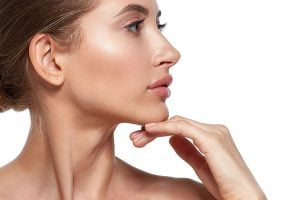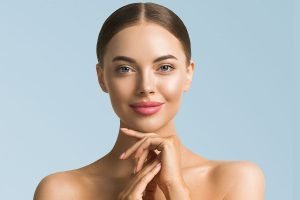Skin has been reported to reflect the general inner-health status and aging. Nutrition and its reflection on skin has always been an interesting topic for scientists and physicians throughout the centuries worldwide. Vitamins, carotenoids, tocopherols, flavonoids and a variety of plant extracts have been reported to possess potent anti-oxidant properties and have been widely used in the skin care industry either as topically applied agents or oral supplements in an attempt to prolong youthful skin appearance. This review will provide an overview of the current literature “linking” nutrition with skin aging.
Introduction
Beauty comes from the inside. The connection between nutrition and skin condition or rather the effect of nutrition on skin aging has been an interesting research field not only for scientists but also a common field of interest for humans throughout the years, from ancient times to nowadays. Skin aging consists of two didactically independent, clinically and biologically, distinct processes.1 The first is intrinsic skin aging, which represents chronological aging and affects skin in the same pattern it affects all internal organs.2 The second is extrinsic skin aging, which we view as aged skin and is the result of external factors and environmental influence, mainly chronic sun exposure and ultraviolet (UV) irradiation but also smoking, pollution, sleep deprivation and poor nutrition.
Prevention is the best and most effective way to work against extrinsic skin aging effects. The best prevention strategy against the harmful action of free radicals is a well regulated lifestyle (caloric restriction, body care and physical exercise for body), with low stress conditions and a balanced nutritional diet, including anti-oxidative rich food.
Frequently researched antioxidants such as carotenoids, tocophenols and flavonoids, as well as vitamins (A, C, D and E), essential omega-3-fatty acids, some proteins and lactobacilli have been referred as agents capable of promoting skin health and beauty.3,4 To find a proper balance, this review considers the beneficial “anti-aging” effects of increased reactive oxygen species (ROS) signaling recently.
The appropriate generation of ROS (for instance after physical exercise) has beneficial cell-protective and anti-aging effects. ROS activate via stimulation of STE-like 20 protein kinase 1 (MST1) and Jun N-terminus kinase (JNK) specific phosphorylations of forkhead box class O transcription factor (FoxO transcription factors), which thereafter translocate from the cytoplasm into the nucleus and thereby induce the expression of anti-oxidative enzymes like superoxide dismutase, catalase and others. The expression and upregulation of the cell’s own intrinsic antioxidative enzyme systems finally do the “job” and protect the cell against accumulating and harmful cellular levels of ROS.5 Remarkably, upregulation of nuclear FoxO levels suppresses cell proliferation and induces apoptosis.
The aim of this work is to review the existing literature and eventually to give an insight to the question whether diet actually influences the way our skin ages.
Vitamins
L-ascorbic acid (vitamin C)
Vitamin C, also named L-ascorbic acid, is water soluble, photosensitive and is the most important antioxidant in the hydrophilic phase. Vitamin C is not naturally synthesized by the human body and therefore adequate dietary intake of vitamin C is required and essential for a healthy human diet.
The richest natural sources are fresh fruits and vegetables such as citrus fruits, blackcurrant, rose hip, guava, chili pepper or parsley. Stability of the vitamin C molecule depends on aggregate condition and formulation.
L-ascorbic acid can be used orally and topically for skin benefits. Vitamin C is a cofactor for lysyl and prolyl hydroxylase, which stabilize the triple helical structure of collagen.6 It also plays a role in cholesterol synthesis, iron absorption and increases the bioavailability of selenium. The most commonly described cutaneous manifestations accompanying vitamin C deficiency are attributed to the impaired collagen synthesis. Enlargement and keratosis of hair follicles mainly of the upper arms and curled hairs, the so-called ‘corkscrew hairs’, are usually described. The follicles become hemorrhagic with time and they sometimes mimic the palpable purpura of leucocytoclastic vasculitis.7
Additionally, vitamin C deficiency is known for causing scurvy, a disease with some manifestations such as fragility, skin lesions in form of petechiae, gum bleeding, ease of developing bruises or slow wound healing.8
Topically ascorbic acid is used in various cosmetic products, for example in lightening of skin dyspigmentation, anti-aging and sun protection formulations. The idea of sun protecting products is to have a combination product between a “passive” protection with a UV filter and an “active” protection with the antioxidant. UVB protection by vitamin C is frequently mentioned in the literature.6,9–11 However, the study by Wang et al. indicates that more work in formulation of cremes is needed, since there seem to be many products in which the desired effects are not measurable.12 The use of vitamin C in cosmetic products is difficult as its reducing capacity occurs very fast and its degradation may occur under the presence of oxygen even before the topical application to the skin.13
Nutricosmetic products with L-ascorbic acid work as free radical scavengers and repair the membrane bound oxidized vitamin E.14 A long-term study observed the effects of a combination of ascorbic acid and d-α-tocopherol (vitamin E) administered orally to human volunteers on UVB-induced epidermal damage. The treatment was well-tolerated and could be used prophylactically against the hazardous effects of solar UV irradiation and skin cancer, according to the authors.9 Another paper describes an 8-week study, which compared topical and systemic antioxidant treatment. Topical and systemic treatment both seemed to be good photoprotectants.15
There are many preparations of vitamin C- based products available on the market, but these are predominantly based on more stable esters and other derivatives of vitamin C which more readily penetrate the skin but are not necessarily converted to the only active vitamin C, L-ascorbic acid.16 These topical or oral products do not have the effects provided by L-ascorbic acid.
Tocopherols (vitamin E)
The vitamin E complex is a group of 8 compounds called tocopherols. Tocopherol is a fat-soluble membrane bound antioxidant and consequently a free-radical scavenger especially of highly reactive singlet oxygen. Tocopherol is like vitamin C a naturally occurring endogenous non-enzymatic antioxidant.
Vitamin C and vitamin E act synergistically. When UV-activated molecules oxidize cellular components, a chain reaction of lipid peroxidation in membranes rich in polyunsaturated fatty acids is induced. The antioxidant d-α-tocopherol is oxidized to the tocopheroxyl radical in this process and it is regenerated by ascorbic acid to d-α-tocopherol.17,18 Beside ascorbic acid, glutathione and coenzyme Q10 can also recycle tocopherol.
Higher amounts of tocopherol are available in vegetables, vegetable oils like wheat germ oil, sunflower oil, safflower oil and seeds, corn, soy and some sorts of meat. The intake of natural vitamin E products helps against collagen cross linking and lipid peroxidation, which are both linked to aging of the skin.
With the process described above, D-α-tocopherol is involved in stabilizing the cell membrane by inhibiting oxidation of polyunsaturated fatty acids, such as arachidonic acid of membrane phospholipids. Topical applied vitamin E is described to reduce erythema, sunburned cells, chronic UVB-induced skin damage and photocarcinogenesis in the majority of the published studies.13,19 Vitamin E deficiency has been associated with a syndrome of edema with papular erythema or seborrhoiec changes, dryness and depigmentation in premature infants.20
There are many clinical studies, which have tested the effects of tocopherol. The data seem to be controversial, but high doses of oral vitamin E may affect the response to UVB in humans.21 Data of Ekanayake-Mudiyanselage and Thiele suggest that vitamin E levels are dependent on the density of sebaceous glands in the skin. In a 3-week study with daily oral supplementation of moderate doses of α-tocopherol significantly increased vitamin E levels measured in skin sites rich in sebaceous glands, such as the face. This should be considered when designing clinical vitamin E studies.22
Oral combination treatments of vitamins C and E, partly with other photoprotective compounds, did increase the photoprotective effects dramatically compared with monotherapies. Experts recommend that this synergetic interplay of several antioxidants should be taken into consideration in future research on cutaneous photoprotection.23
Carotenoids (vitamin A, β-carotene, astaxanthin, retinol)
Carotenoids are vitamin A derivates like β-carotene, astaxanthin, lycopene and retinol, which are all highly effective antioxidants and have been documented to possess photoprotective properties. Findings of Scarmo et al. suggest that human skin, is relatively enriched in lycopene and β-carotene, compared with lutein and zeaxanthin, possibly reflecting a specific function of hydrocarbon carotenoids in human skin photoprotection.24
β-carotene is the most prominent member of the group of carotenoids, natural colorants that can be found in the human diet.25 Compared with other carotenoids, the primary role of β-carotene is its provitamin-A activity. β-carotene can be cleaved by BCMO1 enzyme into 2 molecules of all-trans-retinal. There is no difference between naturally occurring and chemically synthesized β-carotene. Furthermore, β-carotene can also act as a lipid radical scavenger and as a singlet oxygen quencher, as demonstrated in vitro.26 Based on the distribution of BCMO1 in human tissues it seems that β-carotene metabolism takes place in a wide variety of organs, including the skin.27
Carrots, pumpkin, sweet potatoes, mangos and papaya are some examples of β-carotene containing fruits and vegetables.
Upon dietary supplementation, β-carotene can be further enriched in skin, in which it is already a major carotenoid.28 β-carotene is an endogenous photoprotector, and its efficacy to prevent UV-induced erythema formation has been demonstrated in various studies.29,30 In healthy volunteers, a 12-week oral administration of β-carotene may result in a reduction of UV-induced erythema.31 Similar effects have been described in volunteers receiving a lycopene-rich diet.32
The systemic photoprotecting effect of β-carotene depends both on dose and duration of treatment. In studies documenting protection against UV-induced erythema, supplementation with carotenoids lasted for at least 7 weeks, with doses > 12 mg/d of carotenoids.31,33–35 With treatment periods of only 3–4 weeks, studies reported no protective effects.36 Furthermore, β-carotene supplementation can significantly reduce the rate of mitochondrial mutation in human dermal fibroblasts after UV irradiation.37
Astaxanthin is found in microalgae, yeast, salmon, trout, krill, shrimp, crayfish and crustacea. Astaxanthin is biosynthesized by microalgae or phytoplankton, which are consumed by zooplankton or crustacea. They accumulate astaxanthin and, in turn are ingested by fish which then accrue astaxanthin in the food chain.38 Therefore, astaxanthin has considerable potential and promising applications in human health and nutrition39 and has been attributed an extraordinary potential for protecting the organism against a wide range of diseases (reviewed in refs. 40 and 41).
The UV protective effects of algal extract containing 14% of astaxanthin compaired to synthetic astaxanthin have also been tested. The authors of this study reported that preincubation with synthetic astaxanthin or an algal extract could prevent UVA-induced alterations in cellular superoxide dismutase activity and decrease in cellular glutathione content.42
In a study of Camera et al. the modulation of UVA-related injury by astaxanthin, canthaxanthin, and β-carotene for systemic photoprotection in human dermal fibroblasts has been compared.43 Astaxanthin showed a significant photoprotective effect and counteracted UVA-induced alterations to a great extent. The uptake of astaxanthin by fibroblasts was higher than that of canthaxanthin and β-carotene, which lead to the assumption that the effect of astaxanthin toward photooxidative changes was stronger than that of the other substances. A recent study of Suganuma et al. showed that astaxanthin could interfere with UVA-induced matrix-metalloproteinase-1 and skin fibroblast elastase/neutral endopeptidase expression.44 Both studies suggest that effects of UVA radiation, such as skin sagging or wrinkling can be prevented or at least minimized by topical or oral administration of astaxanthin.36,42,44
Lycopene is a bright red carotene and carotenoid pigment and phytochemical found in tomatoes and other red fruits and vegetables, such as red carrots, watermelons and papayas (but not strawberries or cherries). Although lycopene is chemically a carotene, it has no vitamin A activity.
β-carotene and lycopene are usually the dominating carotenoids in human blood and tissues and are known to modulate skin properties when ingested as supplements or as dietary products. While they cannot be compared with sunscreen, there is evidence that they protect the skin against sunburn (solar erythema) by increasing the basal defense against UV light-mediated damage.45
A study confirmed that the amounts of lycopene in plasma and skin are comparable to or even greater than those of β-carotene. When skin is exposed to UV light stress, more skin lycopene is destroyed compared with β-carotene, suggesting a role of lycopene in mitigating oxidative damage in tissues.46 Lycopene and tomato products are also mentioned for preventing cancer.47,48
Retinol is important for the human body; however the body itself cannot synthesize it. Retinol, a fat-soluble unsaturated isoprenoid like its two important metabolites retinaldehyde and retinoic acid, is essential for growth, differentiation and maintenance of epithelial tissues and influences reproduction. In human skin two retinoid receptors are expressed, which can be activated by retinol and its metabolites.49
Retinaldehyde, additionally being important for vision, is created by in vivo oxidation of retinol in a reversible process. The normal plasma concentration of vitamin A in humans is 0.35–0.75 μg/ml.50,51
Retinol must derive from diet. Natural retinol and retinol ester are contained in liver, milk, egg yolk, cheese and fatty fish etc. Naturally occurring and synthetic vitamin A (retinol) show similar biological activities. Different retinol products, both for cosmetic (topical) and pharmaceutical (topical, systemic) use can be found on the market.
In a review of topical methods to counteract skin wrinkling and irregular pigmentation of aging skin, Bayerl evaluates the effects of vitamin A acid derivatives, chemical peeling and bleaching agents. Also, the effects of UV protection by using sunscreens and topical antioxidants are reviewed.52 The topical retinoid treatments inhibit the UV-induced, MMP-mediated breakdown of collagen and protect against UV-induced decreases in procollagen expression.53–55
Endogenous retinoids cannot be linked to the pathogenesis of common skin diseases like acne and psoriasis. Oral treatment with retinol or retinal derivatives has not been proposed as a possible anti-aging treatment. Humans require 0.8‒1 mg or 2400‒3000 IU vitamin A per day (1 IU = 0.3 µg).51
Unfortunately the large CARET trial mentioned lung cancer-promoting effects of 25,000 IU retinyl palmitate combined with 30 mg β-carotene intake in smokers.56 Thus, the belief that chemical quenching of free radicals by natural compounds like retinyl palmitate and β-carotene exerts always beneficial effects has been challenged. Omenns data showed that an artificial systemic increase of antioxidants by dietary supplementation intended to modify UV erythema thresholds may have severe internal adverse effects which even may not only increase risk of cell aging but of tumor promotion. However experts still recommend dietary intake of fruits and vegetable.
Vitamin D
In humans vitamin D serves two functions, it acts as a prohormone and the human body can synthesize it itself through sun exposure. Skin is the major site for UV-B mediated vitamin D3, and 1,25-dihydroxy vitamin D3 synthesis. Smaller amounts of vitamin D2 and D3 come from the dietary intake of animal-based foods such as fatty fish or egg yolk. Some products like milk, cereals and margarine can be enriched with vitamin D.
Excess of vitamin D is stored in fat of the body and can result in toxic effects. This toxicity presents with nausea, vomiting, poor appetite, weakness, weight loss and constipation. Food-intake of vitamin D high enough to cause toxicity is very unlikely.
The skin is one of the key tissues of the human body vitamin D endocrine system. It is important for a broad variety of independent physiological functions, which are reviewed in Reichrath et al.51 Besides its role in calcium homeostasis and bone integrity 1,25-dihydroxy vitamin D3 [1,25(OH)2D3] is also essential for numerous physiologic functions including immune response, release of inflammatory cytokines and regulation of growth and differentiation in normal and malignant tissues such as breast, lung and colon.51 1,25(OH)2D3 protects human skin cells from UV-induced cell death and apoptosis,57 inhibits the activation of stress-activated protein kinases,58 such as the c-Jun NH2-terminal kinase and p38, and suppresses IL-6 production. Several in vitro and in vivo studies have documented the protective effect of 1,25(OH)2D3 against UVB-induced skin damage and carcinogenesis.58,59 Furthermore, 1,25(OH)2D3 induces the expression of antimicrobial peptide genes in human skin60 and plays a significant role in preventing opportunistic infections. With increasing age the capacity of the skin to produce vitamin D3 declines and consequently the protective effects of the vitamin. There are several factors contributing to this deficiency state among them behavioral factors, for example limited sun exposure or malnutrition, which can be partially altered by behavior modification and various intrinsic factors like reduced synthetic capacity. In skin, the concentration of 7-dehydrocholesterol—a vitamin D3 precursor—showed an approximately 50% decline from age 20 y to age 80 y61 and the total amount of pre-vitamin D3 in the skin of young subjects was at least two times greater than when compared with that of the elderly subjects. Vitamin D and calcium supplementation is therefore of great importance in the elderly population.13
Chang et al. also suggest an association between skin aging and levels of 25(OH)D3, another precursor of vitamin D. It may be possible that low 25(OH)D3 levels in women, who show less skin aging may reflect underlying genetic differences in vitamin D synthesis.62
Many other studies that tested oral vitamin D treatment showed skin cancer prevention, which is linked to anti-aging effects.63,64
In 2009, the American Academy of Dermatology and the Canadian Cancer Society recommended a 200 IU/day dosis for children (0–14 y), 200 IU for the age population between 14–50 y, 400 IU for the 50–70 y and 600 IU for people over their 71st year of age.65
A higher dose of vitamin D 1000 IU/day (adults) and 400 IU/day (children 0–14 y) intake has been recommended for individuals with known risk factors for vitamin D insufficiency like dark skin individuals, elderly persons, photosensitive individuals, people with limited sun exposure, obese individuals or those with fat malabsorption.65
The Food and Nutrition Board published a new recommendation for dietary allowance levels and tolerable upper intake levels (ULs) for vitamin D intake in 2010. The recommended dietary allowance (Table 1) represents a daily intake that is sufficient to maintain bone health and normal calcium metabolism in healthy people.66
Table 1.
| Age | Male | Female | Pregnancy | Lactation |
|---|---|---|---|---|
| 0–12 months*
|
400 IU (10 mcg) |
400 IU (10 mcg) |
|
|
| 1–13 years
|
600 IU (15 mcg) |
600 IU (15 mcg) |
|
|
| 14–18 years
|
600 IU (15 mcg) |
600 IU (15 mcg) |
600 IU (15 mcg) |
600 IU (15 mcg) |
| 19–50 years
|
600 IU (15 mcg) |
600 IU (15 mcg) |
600 IU (15 mcg) |
600 IU (15 mcg) |
| 51–70 years
|
600 IU (15 mcg) |
600 IU (15 mcg) |
|
|
| >70 years | 800 IU (20 mcg) |
800 IU (20 mcg) |
Long-term intakes of vitamin D above the upper intake levels increase the risk of adverse health effects. Most reports suggest a toxicity threshold for vitamin D of 10,000 to 40,000 IU/day and serum 25(OH)D levels of 500–600 nmol/L (200–240 ng/mL).
With daily intakes below 10,000 IU/day, toxicity symptoms are very unlikely. However, recent results from observational studies, national survey data and clinical trials have shown adverse health effects over time at much lower levels of vitamin D intakes and serum 25(OH)D. Since serum levels of approximately 75–120 nmol/L or 30–48 ng/mL have been associated with increased all-cause mortality, greater risk of cancer at some sites like the pancreas, greater risk of cardiovascular events as well as more falls and fractures with elderly subjects, the Food and Nutrition Board advises that serum 25(OH)D levels above 125–150 nmol/L (50–60 ng/mL) should be avoided and cites research results that link vitamin D intakes of 5,000 IU/day with a serum concentration at a maximum of 100–150 nmol/L (40–60 ng/mL).66
Polyphenols
Polyphenols have drawn the attention of the anti-aging research community over the last decade, mainly because of their antioxidant properties, their great intake amount in our diet and the increasing studies showing their probable role in the prevention of various diseases associated with oxidative stress, such as cancer and cardiovascular and neurodegenerative diseases.67 Their total dietary intake could be as high as 1 g/d, which is much higher than that of all other classes of phytochemicals and known dietary antioxidants.68,69 They are mostly found in fruits and plant-derived beverages such as fruit juices, tea, coffee, and red wine. Vegetables, cereals, chocolate and dry legumes are also sources for the total polyphenol intake.69 Several thousand molecules having a polyphenol structure have been identified in plants being generally involved in defense against UV radiation or aggression by pathogens. Depending on the number of phenol rings and the way that these rings bind to one another, polyphenols can be divided into many different functional groups such as the phenolic acids, flavonoids, stilbenes, and lignans.67 Flavonoids are also further divided into flavones, flavonols, isoflavones, and flavanones, each with a slightly different chemical structure.6
It has been reported that the polyphenolic content of foods can be easily affected or seriously reduced by methods of meal preparation and culinary traditions. For example, onions, which are a major source of phenolic acids and flavonoids, and tomatoes lose between 75% and 80% of their initial content when boiled over 15 min, 65% when cooked in a microwave oven and 30% when fried.70 In French fries or freeze-dried mashed potatoes no remaining phenolic acids were to be found.71
Laboratory studies of different polyphenols such as, green tea polyphenols, grape seed proanthocyanidins, resveratrol, silymarin and genistein, conducted in animal models on UV-induced skin inflammation, oxidative stress and DNA damage, suggested that these polyphenols, combined with sunscreen protection, have the ability to protect the skin from the adverse effects of UV radiation, including the risk of skin cancers.72 The underlying mechanism of polyphenols actions has been a major discussion over the last decades. One of the most abundant theories is that the cells respond to polyphenols mainly through direct interactions with receptors or enzymes involved in signal transduction, which may result in modification of the redox status of the cell and may trigger a series of redox-dependent reactions.73,74 As antioxidants, polyphenols may improve cell survival; as prooxidants, they may induce apoptosis and prevent tumor growth.69,75 However, the biological effects of polyphenols may extend well beyond the modulation of oxidative stress.69
Some interesting polyphenols, flavonoids and botanical anti-oxidants and their properties, which have drawn attention for their unique anti-aging effects are discussed next.
Flavonoids
Phlorizin
Phlorizin belongs to the group of dihydrochalcones, a type of flavonoids and it is naturally occurring in some plants. It could be found in the bark of pear (Pyrus communis), apple, cherry and other fruit trees. It has been used as a pharmaceutical and tool for physiology research for over 150 y. However, its anti-aging effects have only been reported in the last years. Investigations of the effects of phlorizin on lifespan of the yeast Saccharomyces cerevisiae showed an improvement of the viability of the yeast, which was dose-dependent under oxidative stress.76 Further investigations on humans are needed.
Many other botanical extracts, which are not discussed in this review, have been described to have potent anti-oxidant properties. Among them silymarin,77 apigenin78 and genistein79 have been demonstrated to have beneficial effects on skin aging parameters.
Botanical anti-oxidants
The nutrient-sensitive kinase mammalian target of rapamycin complex 1 (mTORC1) integrates nutrient signaling. This mTORC1 is the central hub regulating protein and lipid synthesis, cell growth and cell proliferation and the process of autophagy and is thus intimately involved in central regulatory events associated with cell survival and cell aging. Intriguingly, all natural plant-derived polyphenols like EGCG, resveratrol, curcumin, genestin and others are natural inhibitors of mTORC1, recently described in this journal.80 Natural polyphenols exert their major metabolic activity as mTORC1 inhibitors, a fundament aspect relating calorie restriction and/or nutrient-derived mTORC1 attenuation to deceleration of aging. In fact, it has recently been demonstrated that mTORC1 inhibition by rapamycin extended life span in mice.81 This antioxidants from naturals souce exhibit more crucial functions as “Botanical mTORC1 inhibitors” and attenuate mTORC1 signaling, a beneficial property which decelerates cell metabolism, energy expenditure, mitochondrial activity and thus total ROS generation and oxidative stress load of the cells.
Resveratrol (Stilbenes)
Resveratrol is an antioxidant, natural polyphenol, abundant in the skin of grapes (but not in the flesh). It has been the subject of intense interest in recent years due to a range of unique anti-aging properties. High concentrations of natural resveratrol and resveratrol oligomeres are found in grape shoots from Vitis Vinifera. Resveratrol and its oligomeres, trans-piceatannol, the dimers epsilon-viniferin, ampelopsin, iso-epsilon-viniferin, the trimers miyabenol C and the tetramers hopeaphenol, R-viniferin and R2-viniferin belong to the sub-group of stilbenes. Resveratrol works both as a chelating agent and as a radical scavenger and in addition it takes part in inflammation by inhibiting the production of IL-8 by LPS-induced MAPK phosphorylation and a block of NFΚB activation.82 In 2002 Bhat et al. reported that resveratrol possesses cancer chemopreventive activities.83 Cardiovascular benefits via increased nitric oxide production, downregulation of vasoactive peptides, lowered levels of oxidized low-density lipoprotein, and cyclooxygenase inhibition; possible benefits on Alzheimer disease by breakdown of β-amyloid and direct effects on neural tissues; phytohormonal actions; antimicrobial effects; and sirtuin activation, which is believed to be involved in the caloric restriction-longevity effect have also been reported.84 As far as skin is concerned, resveratrol has been recently shown to possess a protective action in vitro against cell death after exposure of HaCaT cells to the nitric oxide free radical donor sodium nitroprusside.85 Furthermore, Giardina et al. reported in 2010 that in experiments in vitro with skin fibroblasts treated with resveratrol there was a dose-related increase in the rate of cell proliferation and in inhibition of collagenase activity.86 Steinberg showed that resveratrol oligomers hopeaphenol, epsilon-viniferin, R2-viniferin, ampelopsin inhibit the growth number of human tumor cell lines significantly stronger than resveratrol itself.87,88
Curcumin
Curcumin is the principal curcuminoid of the popular Indian spice turmeric, which is a member of the ginger family (Zingiberaceae) and is frequently found in rice dishes to add yellow color to the otherwise white rice. Curcumin has been shown to protect against the deleterious effects of injury by attenuating oxidative stress and suppressing inflammation (reviewed in ref. 89). In human fibroblasts curcumin induced cellular stress responses through phosphatidylinositol 3-kinase/Akt pathway and redox signaling, thus providing evidence that curcumin-induced hormetic stimulation of cellular antioxidant defenses can be a useful approach toward anti-aging intervention.90 Oral ingestion in rodents has produced correction of cystic fibrosis defects and inhibition of tumor proliferation, but human trials are lacking.6,91,92
Green tea polyphenols
Green tea polyphenols (GTPs) derivating from the leaves of the Camellia sinensis have been postulated to protect human skin from the cutaneous signs of photoageing. In animal models, UV-induced cutaneous edema and cyclooxygenase activity could be significantly inhibited by feeding the animals with GTPs.93 However, in a study in 2005, although participants treated with a combination regimen of topical and oral green tea showed histologic improvement in elastic tissue content, clinically significant changes could not be detected.94 Many laboratories have reported that topical treatment or oral consumption of green tea polyphenols inhibits chemical carcinogen- or UV radiation-induced skin tumorigenesis in different animal models. Studies have shown that green tea extract also possesses anti-inflammatory activity. These anti-inflammatory and anti-carcinogenic properties of green tea are due to their polyphenolic constituents present therein. The major and most chemopreventive constituent in green tea responsible for these biochemical or pharmacological effects is (-)-epigallocatechin-3-gallate (EGCG).95 EGCG can directly inhibit the expression of metalloproteinases such as MMP-2, MMP-9 and MMP-12,96 and is a potent inhibitor of leucocyte elastase,97 which is instrumental in tumor invasion and metastasis.
Topical application of green tea extract containing GTPs on C3H mice reduced UVB- induced inflammation.98 The researchers also found protection against UV-induced edema, erythema, and antioxidant depletion in the epidermis. This work further investigated the effects of GTPs after application to the back of humans 30 min before UV irradiation. A decrease of myeloperoxidase activity and infiltration of leukocytes compared with the untreated skin was documented.99
Ubiquinol (Coenzyme Q10)
Coenzyme Q10 (CoQ10) is a fat-soluble, endogenous (synthesized by the body), vitamin-like substance that is mainly stored in the fat tissues of our body. It is present in most eukaryotic cells, primarily in the mitochondria and plays an important role as a component of the electron transport chain in the aerobic cellular respiration, generating energy. Ubiquinol is also a well-known powerful antioxidant compound. In the skin, CoQ10 is mainly to be found in the epidermis where it acts in combination with other enzymic and non-enzymic substances as the initial barrier to oxidant assault.100 Primary dietary sources of CoQ10 include oily fish (such as salmon and tuna), organ meats (such as liver), and whole grains. The amount of CoQ10 needed in human organism can be gained through a balanced diet, however in the market CoQ10 is available in several forms as a supplement, including soft gel capsules, oral spray, hard shell capsules, and tablets. As a fat-soluble substance it is better absorbed when taken with fat rich meals. CoQ10 is also added to various cosmetics. It has been shown on rats that a CoQ supplementation elevates CoQ homologs in tissues and their mitochondria, thus causing a selective decrease in protein oxidative damage, and an increase in antioxidative potential.101 Furthermore, in a human study where 50 mg each of vitamin E, coenzyme Q10, and selenium were administered combined with the use of topical bio-cosmetics, an increase in stratum corneum CoQ10 was noted after 15 and 30 d of ingestion.102 In cases of primary CoQ10 deficiency in vitro experiments have shown that they should be treated with CoQ10 supplementation and that complementary administration of antioxidants with high bioavailability should be considered if oxidative stress is present.103 On the other hand, in experiments contacted on mice the supplemental intake of CoQ10 had no effect on the main antioxidant defense or pro-oxidant generation in most tissues, and had no impact on the life span of mice.104
Pre- and Probiotics
The term probiotic is defined as “living microorganisms, which, when consumed in adequate amounts, confer a health effect on the host.”105,106
The most commonly used probiotics in humans and animals are enterococci, lactobacilli and bifidobacteria, which are natural residents of the intestinal tract.
A prebiotic is a non-viable food component that confers a health benefit on the host associated with modulation of the microbiota.107 Oligofructose and other oligosaccharides are prebiotic which have a significant effect on the population of luminal flora, in particular, stimulating bifidobacterial populations.
Currently, finding alternatives to antibiotics for skin treatment is receiving a lot of interest in research. It has been found that, similarly to the gut microflora, the skin’s microbiota plays a beneficial role. Thus, the possibility to modulate the microbiota more selectively is highly interesting.
UV exposure is known to negatively affect immune system functions.108 Clinical studies that used probiotic bacteria (Lactobacillus johnsonii NCC 533) to modulate the cutaneous immune homeostasis altered by solar-simulated UV exposure in humans suggest that certain probiotics can help preserve the skin homeostasis by modulating the skin immune system.109,110
According to Schouten et al., a prebiotic diet caused reduced acute allergic skin response in recipient mice.111
Essential Fatty Acids (Vitamin F)
Essential fatty acids (EFAs) are long-chain polyunsaturated fatty acids derived from linolenic, linoleic and oleic acids. They cannot be produced in the human body and they have to be consumed through our daily dietary intake. EFAs have also been known as vitamin F. Arachidonic acid is a semi-EFA, as it can be synthesized in the body from linoleic acid. The two families of EFAs are ω-3, derived from linolenic acid, and ω-6, derived from linoleic acid, with the number indicating the position of the first double bond continuing from the terminal methyl group on the molecule.6,112 They are present in multiple food sources such as fish and shellfish, flaxseed, hemp oil, soya oil, canola oil, chia seeds, pumpkin seeds, sunflower seeds, leafy vegetables, walnuts, sesame seeds, avocados, salmon and albacore tuna. EFAs are essential for the synthesis of tissue lipids, play an important role in the regulation of cholesterol levels and are precursors of prostaglandins.113
The association between nutrient intakes and skin aging has been examined in 2008 in 4025 women (40–74 y), using data from the first National Health and Nutrition Examination Survey. Skin-aging appearance was defined as having a wrinkled appearance, senile dryness, and skin atrophy. Higher linoleic acid intakes were associated with a lower likelihood of senile dryness and skin atrophy.114 In a study where the effect of fish oil on UV (UV) B-induced prostaglandin metabolism was examined, 13 patients with polymorphic light eruption received dietary supplements of fish oil rich in omega-3 polyunsaturated fatty acids for 3 mo. The authors managed to show a reduction in UV-induced inflammation, possibly due to lowered prostaglandin-E2 levels.115 Furthermore, oral administration of an antioxidant mixture containing vitamin C, vitamin E, pycnogenol and evening primrose oil significantly inhibited wrinkle formation caused by chronic UVB irradiation through significant inhibition of UVB-induced matrix metalloproteinase (MMP) activity accompanied by enhancement of collagen synthesis on hairless mouse skin.116
EFAs can also be found as artificial supplements in the market. Fish oil supplements are usually made from mackerel, herring, tuna, halibut, salmon, cod liver, whale blubber, or seal blubber, are rich in omega-3 fatty acids and often contain small amounts of vitamin E. They might be also combined with calcium, iron, or vitamins A, B1, B2, B3, C or D.
Caloric Restriction
It is widely accepted that caloric restriction (CR), without malnutrition, delays the onset of aging and extends lifespan in diverse animal models including yeast, worms, flies, and laboratory rodents.117 Although the underlying mechanisms remain still unknown, some explanations such as alterations of hormone metabolism, hormone-related cellular signaling, oxidation status, DNA repair, apoptosis, and oncogene expression, have been postulated.118,119 In a histological study on Fischer 344 rats undergoing dietary CR, the histomorphological changes resulting from intrinsic aging were delayed or prevented by CR. Namely, a trend toward increased values for collagen and elastic fibers, fibroblasts, and capillaries and a prevention of age-related increase in the depth of the epidermis, dermis, and fat layer was observed in skin samples from CR rats.120 Furthermore, in skin tissues of mice with CR weight control a palette of genes showed a differential expression when compared with mice receiving normal diet. The authors concluded that dietary CR showed profound inhibitory impact on the expression of genes relevant to cancer risks.121 Studies evaluating CR in nonhuman primates and its effects on human health, and on the metabolic parameters are ongoing.
Conclusions
To conclude, nutrition and skin aging still remains a controversial and conflicting subject. A promising strategy for enhancing skin protection from oxidative stress is to support the endogenous antioxidant system, with antioxidants containing products that are normally present in the skin.11 However, this should be not confused with a permanent intake of non-physiological high dosages of isolated antioxidants. Fruit and vegetables consumption may represent the most healthy and safe method in order to maintain a balanced diet and youthful appearing skin.













